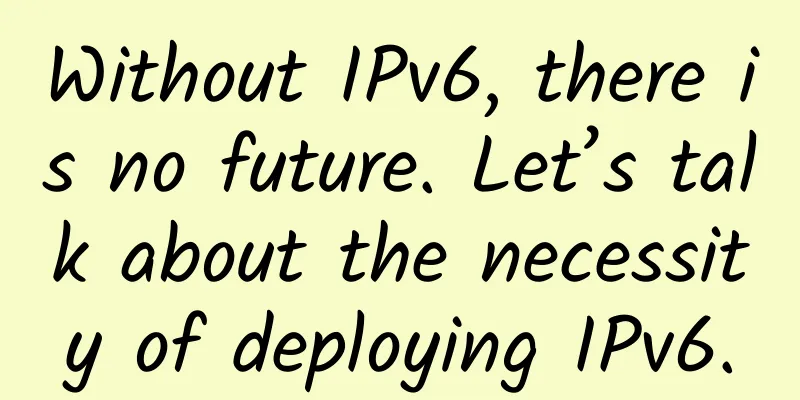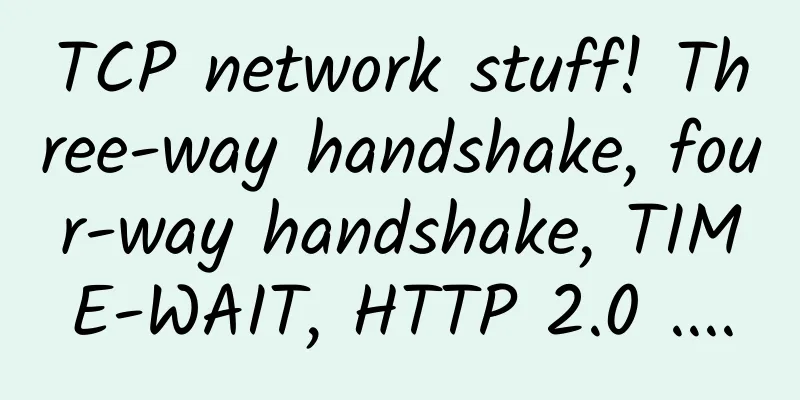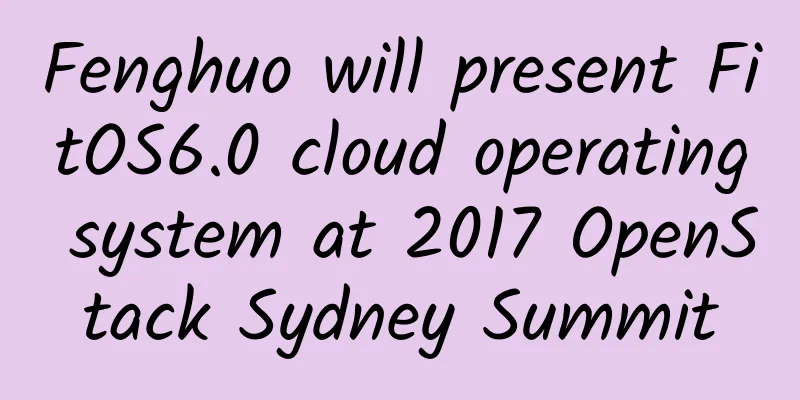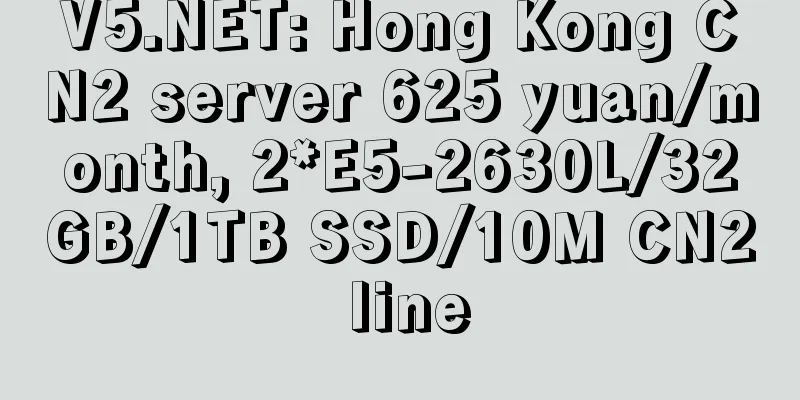Sharing of practical experience on routing technology pitfalls, have you learned it?

|
With the rapid development of information technology, network technology is also constantly updated and iterated, but there is a technology that cannot be replaced. It is responsible for obtaining information and finding paths in the network, and it is the routing protocol. In the process of network construction and operation and maintenance, whether it is a simple or complex network architecture, you will always encounter some routing minefields more or less. It is because of these minefields that you can gain experience and keep awe at all times. As part of the underlying infrastructure connecting the business, the network carries the key business and data traffic of the enterprise. Once a problem occurs, not only the interests of the enterprise will be damaged, but also the user experience will be damaged. This article comes from a veteran who has been engaged in network work for more than ten years. It summarizes the cases of uncommon but fatal routing loops under network routing protocols, and shares tips on mine avoidance during the configuration of network routing protocols. Case 1: Static route configuration lacks a specified next-hop outbound interface, causing a loop Topology environment: Case Description: ❶Configure the static route 192.168.0.0/16 on WAN router CR1 and point the next hop to the organization switch; ❷ WAN router CR1 redistributes static routes to OSPF, and the five types of LSAs are Type 1; ❸The core switch learns the OSPF route sent by WAN router CR1. The next hop of the core switch to 192.168.0.0/16 is CR1; ❹Due to project needs, a new WAN router CR2 is added to replace the CR1 router. Except for the configuration of the upstream core switch, the other configurations of the CR2 router are consistent with those of CR1, including the static routing configuration of the downstream switch. ❺The newly added WAN CR2 router is connected to the core switch and an OSPF neighbor relationship is established; Routing loop occurs: ❻After CR2 is connected to the core switch, half of the services accessed by the PC to the organization are interrupted. The organization route 192.168.0.0/16 is checked on the core switch, and it is found that the route to 192.168.0.0/16 has two next hops with equal load, namely CR1 and CR2 routers; ❼On CR2, the next hop of the organization route 192.168.0.0/16 is the core switch; at this time, the organization route 192.168.0.0/16 is looped between the core switch and the WAN router CR2; Cause of the problem: In this case scenario, the WAN router CR2 is configured with a static route for the downstream organization. Although the downstream organization interface on CR2 is in the DOWN state, the next-hop address configured for the static route is reachable, that is, there is a 1.1.1.0/30 route on CR2. CR2 will perform route iteration query, causing the static route configured on CR2 to be activated and enter the routing table. As a result, the core switch can also learn the downstream organization route from CR2, and a route loop is formed between the core switch and CR2. Solution: Add a specified outbound interface to the static route configured on WAN router CR2. In this case, the static route will be activated and entered into the routing table only when the CR2 outbound interface is in UP state. Case 2: Lack of silent interfaces in OSPF configuration causes loop Topology environment Case Description: ❶ The core switch at the headquarters is configured with a static route 192.168.0.0/16 with the next hop pointing to the access network; ❷The core switch at the headquarters redistributes the static route 192.168.0.0/16 to OSPF, and the five types of LSA are Type 2; ❸After receiving the OSPF route, the headquarters downstream routers CR1 and CR2 redistribute the 192.168.0.0/16 route to the BGP neighbor and send it to the branch upstream router; ❹After receiving the BGP route from the headquarters' downstream router, the branch's upstream router BR2 forwards it to its IBGP neighbor BR1; ❺ The branch upstream router BR2 also redistributes the BGP route 192.168.0.0/16 into OSPF, and the five types of LSAs are Type 1; ❻The branch core switch receives the OSPF route sent by the branch upstream router and transmits it within OSPF. The five types of LSA are Type 1; CR1 hardware card failure: ❼The business card of the headquarters downstream router CR1 fails. During the replacement of the faulty card, the passive-interface command for the interconnection interface between CR1 and BR1 in the OSPF configuration on CR1 disappears. The headquarters downstream router CR1 and the branch upstream router BR1 have established an OSPF neighbor relationship (there is a network Internet segment in the OSPF configuration on CR1 and BR1 devices, and there is no passive-interface command in the OSPF configuration of BR1 device) ❽At this time, the branch's upstream router BR1 receives the Type 1 route 192.168.0.0/16, and BR1 passes it to the head office's downstream router CR1 through OSPF. ❾The headquarters downstream router CR1 receives five types of LSAs of type 2 from the headquarters core switch and five types of LSAs of type 1 from the branch upstream router BR1. Since Type 1 is superior to Type 2 in the OSPF routing principle, the next hop of the route 192.168.0.0/16 in the headquarters downstream router CR1 routing table points to the branch upstream router BR1; since the management distance of the headquarters and branch routers EBGP routing protocol is configured as 20, the next hop of the route 192.168.0.0/16 received by the branch upstream router BR1 is the headquarters downstream router CR1; A routing loop occurs: After the headquarters downstream router CR1 and the branch upstream router BR1 establish OSPF neighbors, CR1 receives the OSPF route of 192.168.0.0/16 sent by BR1. CR1 then redistributes the OSPF route to BR1. The next hop of the BGP route for 192.168.0.0/16 on BR1 is CR1. From then on, the 192.168.0.0/16 route is repeated between CR1 and BR1 until the TTL is exhausted and the message is discarded. Solution: Configure the passive-interface command in the OSPF configuration of the headquarters downstream router CR1 and the branch upstream router BR1 respectively. The loop problem is solved. Case 3: A loop is caused by a problem with the configuration of the priority of the bidirectional dual-point redistribution route Topology environment Case Description: ❶ The branch core switch is configured with a static route 192.168.0.0/16 with the next hop pointing to the access network; ❷The branch core switch redistributes the static route 192.168.0.0/16 to OSPF, and the five types of LSA are Type 1; ❸After receiving the OSPF route, the branch upstream router redistributes the 192.168.0.0/16 route to the EBGP neighbor and sends it to the headquarters downstream router; ❹The headquarters downstream routers CR1/CR2/CR3 receive EBGP routes from the corresponding interconnected Juniper devices BR1/BR2/BR3, with an administrative distance of 20; ❺At this time, the branch's upstream router BR3 has a hardware failure. Use Huawei router equipment to complete configuration translation and replace the faulty device. If the operation fails, first connect to the branch network, establish an OSPF neighbor relationship with the branch core, and establish an IBGP neighbor relationship with the branch's upstream Juniper routers BR1 and BR2; ❻After the new Huawei router BR3 established an IBGP neighbor relationship with the Juniper router, the downstream router of the headquarters could not receive the 192.168.0.0/16 route sent by the branch, and the services between the headquarters and the branch were interrupted; ❼The newly installed Huawei router BR3 learns the OSPF route of 192.168.0.0/16 through the branch core switch and redistributes the OSPF route into BGP (EBGP and IBGP); Routing loop occurs: ❽At this time, the branch's upstream routers BR1 and BR2 learn the 192.168.0.0/16 route sent by the new Huawei router BR3 through IBGP. Since the IBGP routing protocol management distance of the branch's upstream Juniper router is set to 20, which is better than the OSPF external route 150, the 192.168.0.0/16 route originally learned by the branch's upstream Juniper router through the branch's core OSPF is changed from the routing table to the IBGP route. The OSPF for 192.168.0.0/16 on BR1 and BR2 routers disappears and cannot be redistributed to BGP through OSPF. Also, because EBGP and IBGP do not transmit routes to each other by default in Juniper routers, the branch's 192.168.0.0/16 route cannot be sent to the headquarters through EBGP. That is, the headquarters receives the branch's route, and the services between the headquarters and the branch are damaged. A loop appears in the 192.168.0.0/16 route between the branch's upstream routers. Solution: Adjust the IBGP route priority to 170 on the branch's upstream Juniper routers BR1 and BR2 to be higher than the OSPF external route priority of 150. The loop problem is solved. Routing protocol design practice: Static routing:
Routing announcement:
Route summarization and routing policies:
Route redistribution:
Appendix: Default routing priorities of mainstream manufacturers: |
<<: GraphQL vs. REST: What have you learned?
>>: Wi-Fi vs. Ethernet: Which should you use and why?
Recommend
How much power does 5G base stations consume? It is expected to account for 2.1% of the total electricity consumption in society
As we all know, since the first half of the year,...
Did you know? Did you know? Telecom networks should focus on multi-layer orchestration
A few years ago, the word “orchestration” was har...
How far is it from 5G network commercialization to being affordable for everyone?
This year's government work report proposed t...
How practical is 5G for ordinary people?
5G has three main advantages over 4G: high speed,...
Why does WiFi 7 depend on the 6GHz band?
Over the past 20 years, as the most commonly used...
How advanced is the "Smart Island" with 20,000 people? Let me help you experience it first!
[51CTO.com original article] On March 21, Huawei ...
A brief comparison of two SR-TE implementation methods
1. Brief description of background technology Reg...
Laying the foundation for digital finance | H3C launches S12500G-EF, a new generation of green smart switches
On April 25, New H3C Group, a subsidiary of Tsing...
One article explains what is VLAN, Layer 3 switch, gateway, DNS, subnet mask, MAC address
Last time we published what is arp address? What ...
SD-WAN: A killer way to improve network flexibility and efficiency
Wide area networks are generally used to connect ...
Ms. Meng: Being brave is not about not being afraid, but about holding on to the ideals in your heart.
Last night, a letter from a Japanese person was s...
5G will change the world. What does it mean for regulations?
The Fourth Industrial Revolution will see the lin...
Predictions from global telecom industry experts for 2024
Predictions from global telecom industry experts ...
Have you fallen for the rumors and scams about 5G?
Since the birth of mankind, cutting-edge technolo...
Gartner: Four technologies that will have a significant impact on digital commerce in the next two years
[[428882]] According to Gartner's 2021 Hype C...









